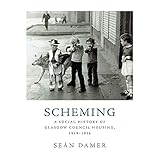Scheming : A Social History of Glasgow Council Housing, 1919-1956 / Seán Damer.
Material type: TextPublisher: Edinburgh : Edinburgh University Press, [2022]Copyright date: ©2018Description: 1 online resource (208 p.)Content type:
TextPublisher: Edinburgh : Edinburgh University Press, [2022]Copyright date: ©2018Description: 1 online resource (208 p.)Content type: - 9781474440561
- 9781474440585
- 363.5094144 23
- HD7288.78.G72 G524 2018
- online - DeGruyter
| Item type | Current library | Call number | URL | Status | Notes | Barcode | |
|---|---|---|---|---|---|---|---|
 eBook
eBook
|
Biblioteca "Angelicum" Pont. Univ. S.Tommaso d'Aquino Nuvola online | online - DeGruyter (Browse shelf(Opens below)) | Online access | Not for loan (Accesso limitato) | Accesso per gli utenti autorizzati / Access for authorized users | (dgr)9781474440585 |
Frontmatter -- Contents -- Tables and Figures -- Acknowledgements -- Preface -- 1. Introduction -- 2. Mosspark: Homes Fit for Heroes? -- 3. Hamiltonhill: A Pioneering Slum-Clearance Scheme -- 4. West Drumoyne: Blue-Collarland -- 5. Blackhill: Out of the Slums -- 6. Craigbank: Amateur Dramatics? -- 7. South Pollok: ‘The Bundy’ -- 8. Alarums and Excursions -- Appendix 1: Balloting for a Council House -- Appendix 2: Methodological Notes -- Bibliography -- Index
restricted access online access with authorization star
http://purl.org/coar/access_right/c_16ec
A comprehensive social history of six Glasgow housing schemes in the first half of the twentieth centuryProvides a short history of the different national inter- and post-war Housing ActsInterrogates how the Corporation of Glasgow interpreted this legislation to develop and implement its housing estate construction and management policyCombines oral histories and Glasgow Corporation records to provide a comprehensive and balanced accountPresents detailed case studies from six housing schemes: Mosspark, Hamiltonhill, West Drumoyne, Blackhill, Craigbank and South PollokWhen the Corporation of Glasgow undertook a massive programme of council house construction to replace the city’s notorious slums after the First World War, they wound up reproducing a Victorian class structure. How did this occur? Scheming traces the issue to class-based paternalism that caused the reification of the local class structure in the bricks and mortar of the new council housing estates.Seán Damer provides a sustained critique of the Corporation of Glasgow’s council housing policy and argues that it had the unintended consequence of amplifying social segregation and ghettoisation in the city. By combining archival research of city records with oral histories, this book lets the locals have their say about their experience as Glasgow council house tenants for the first time.
Mode of access: Internet via World Wide Web.
In English.
Description based on online resource; title from PDF title page (publisher's Web site, viewed 29. Jun 2022)


